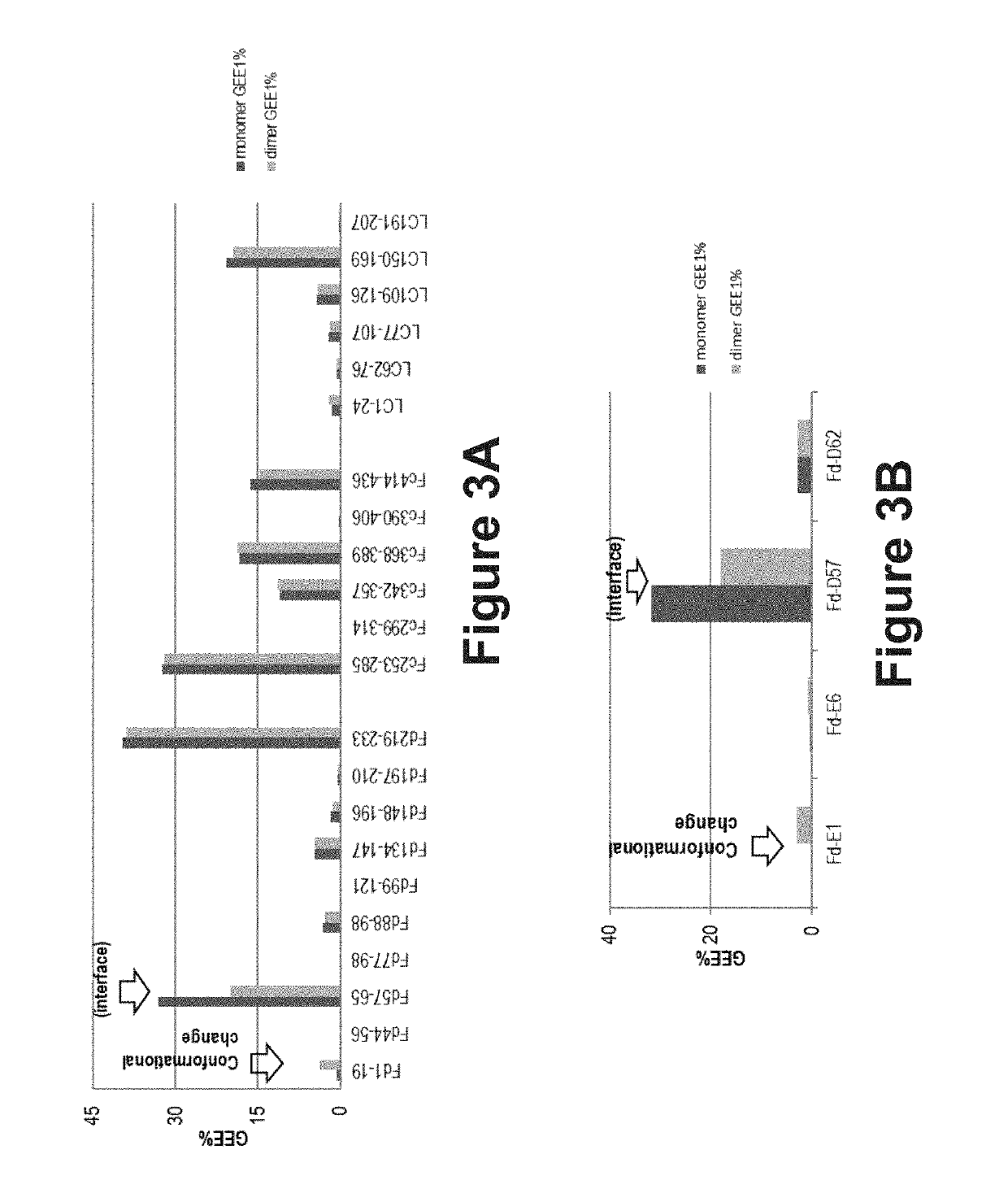System and method for characterizing protein dimerization
- Summary
- Abstract
- Description
- Claims
- Application Information
AI Technical Summary
Benefits of technology
Problems solved by technology
Method used
Image
Examples
example 1
beling of the Dimer and Monomer Mixture by Covalent Labeling
Methods
[0085]Limited Digestion of mAb-1
[0086]mAb-1, an IgG1 isotype, was digested into F(ab) and Fc fragments under native conditions with endoprotease LysC. A mAb-1 dimer was first diluted to 1 μg / μL in 10 mM Tris-HCl (pH 7.5) and then incubated with endoprotease Lys-C (Protein:enzyme=400:1) at 37° C. for 1 hour. This limited digestion treatment specifically cleaves the heavy chain at a Lys residue which is the N-terminal to the two hinge region disulfide bonds, leading to the generation of both F(ab) and Fc fragments. Any noncovalent dimer interactions (most commonly F(ab)-F(ab)) from the dimer species are maintained in the mixture.
[0087]Limited Digestion of mAb-2
[0088]mAb-2, and IgG4 isotype, was digested into F(ab′)2 and Fc* fragments under native conditions with FabRICATOR®, an IdeS enzyme from Streptocoocus pyogenes. mAb-2 dimer is first diluted to 1 μg / μL in 10 mM Tris-HCl (pH 8.0) and then digested with FabRICATOR® ...
example 2
mization
Methods:
[0102]The FPOP protocol from Example 1 was followed. Various components of the protocol, i.e. laser position, scavenger concentration, and inclusion of quenchers were manipulated to determine their effect on the assay.
Results:
[0103]Table 2 shows the experimental parameters for FIGS. 6A and 6B. As seen in FIGS. 6A and 6B, position and laser power affect the labeling efficiency of lysozyme protein. The oxidized species in the sample that was analyzed using the parameters of FIG. 6B, including a closer focusing position and a laser power of 122 mJ, show a good fit of the +0, +16, +32 . . . state product distribution to a Poisson distribution. This is indicative of increased labeling efficiency.
TABLE 2Experimental parametersPosition 1 (further,Position 2 (closer,Focusing Positionmore focusing)less focusing)Protein Concentration0.2mg / mL0.2mg / mLLaser Power168mJ122mJScavenger350μM His350μM His
[0104]As demonstrated by the Poisson distribution date in FIGS. 7A-7F and 8A-8D, l...
PUM
| Property | Measurement | Unit |
|---|---|---|
| Molar density | aaaaa | aaaaa |
| Density | aaaaa | aaaaa |
| Mass | aaaaa | aaaaa |
Abstract
Description
Claims
Application Information
 Login to View More
Login to View More - R&D
- Intellectual Property
- Life Sciences
- Materials
- Tech Scout
- Unparalleled Data Quality
- Higher Quality Content
- 60% Fewer Hallucinations
Browse by: Latest US Patents, China's latest patents, Technical Efficacy Thesaurus, Application Domain, Technology Topic, Popular Technical Reports.
© 2025 PatSnap. All rights reserved.Legal|Privacy policy|Modern Slavery Act Transparency Statement|Sitemap|About US| Contact US: help@patsnap.com



